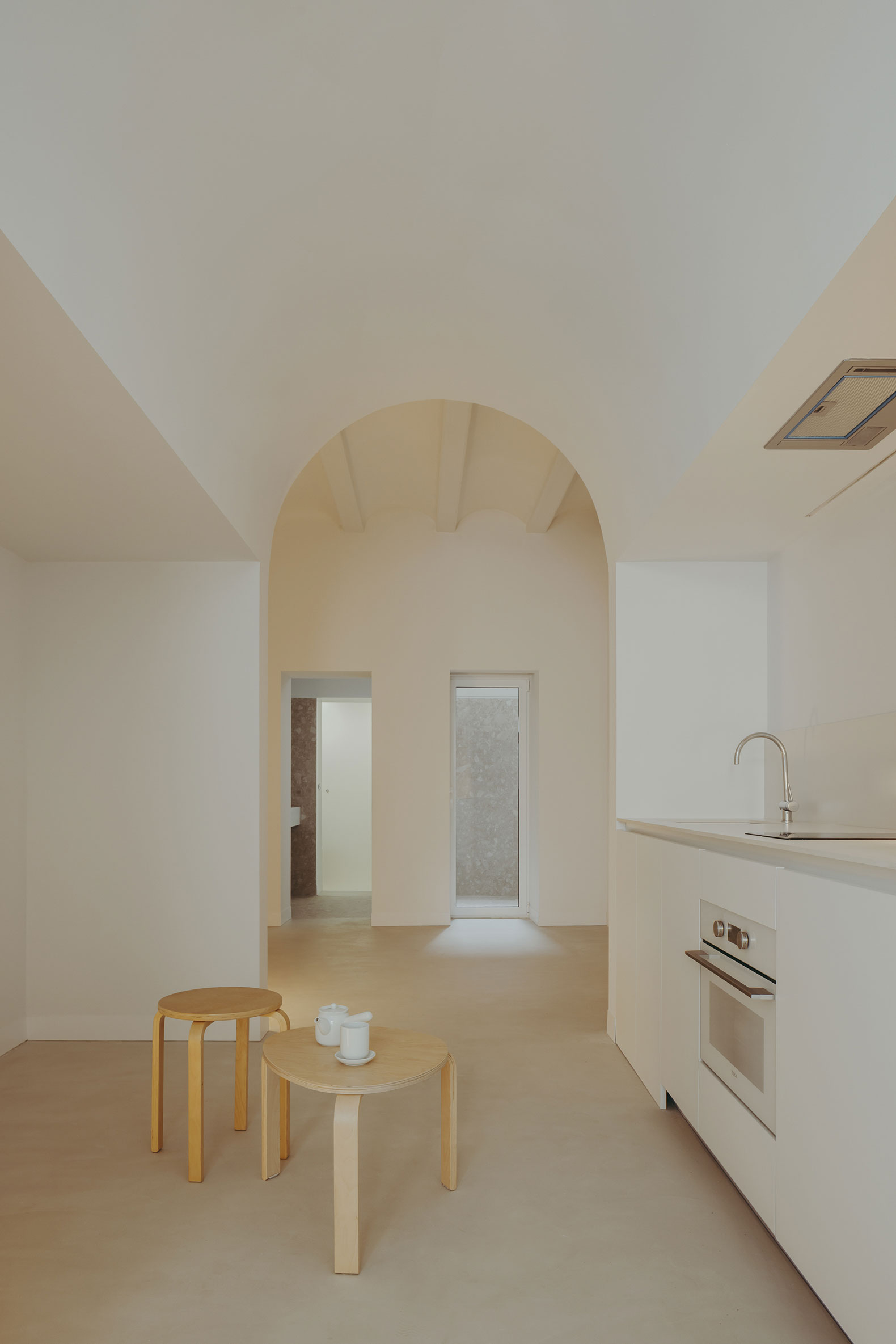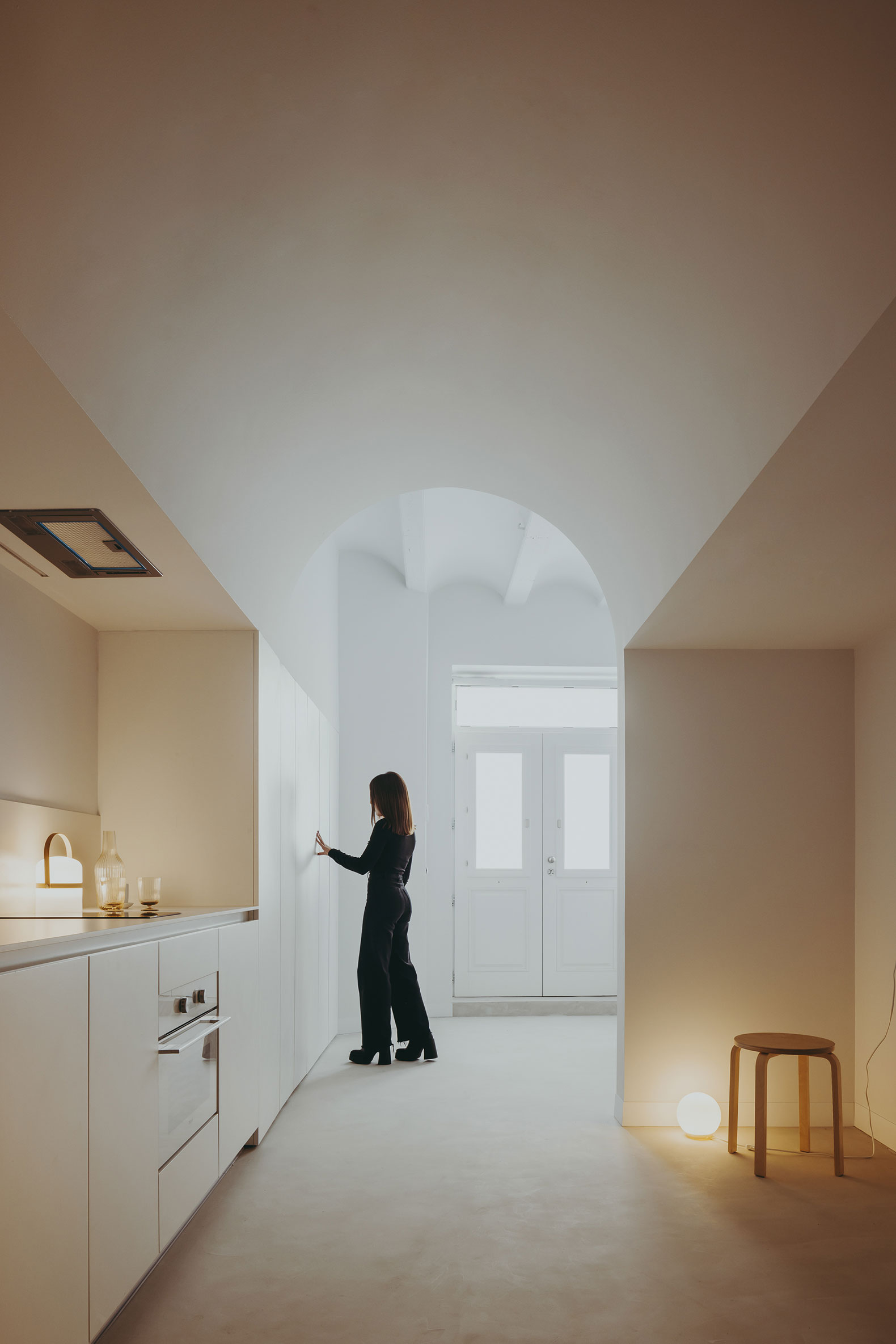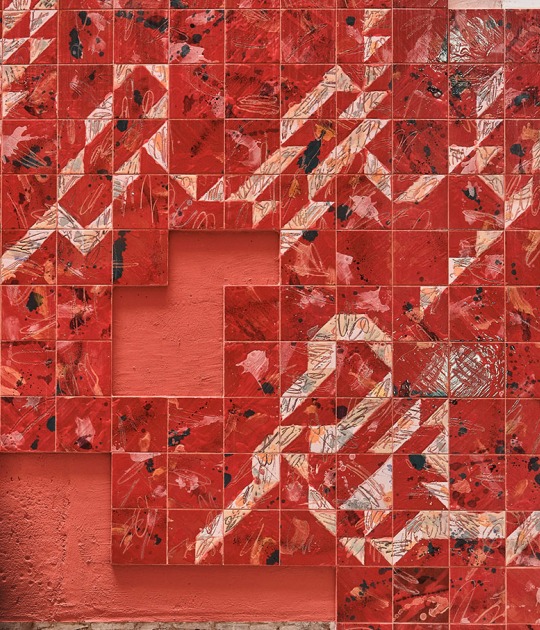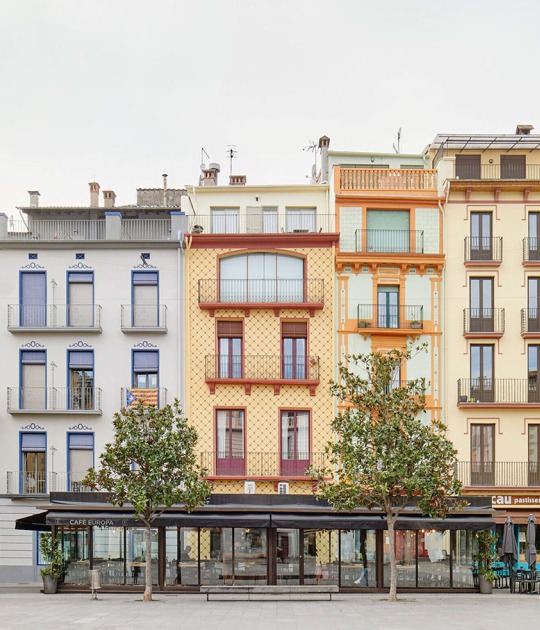The proposal seeks to respect and highlight the most characteristic elements of the original construction such as the exposed slab of wooden beams and joists ceramic vaults, and the small central patio. To do this, it was necessary to maintain the original ceilings and heights, so all the facilities were concentrated in a volume perforated by a vault that established a dialogue between the intervention and the pre-existence.
The project has finished in neutral tones and natural textures that do not detract from the most characteristic elements such as the continuous micro cement pavement, the ceramic coating of the patio and toilet, and the smooth interior carpentry and the same tone as the rest of the plans.

House in El Cabanyal by Enguídanos Marzo Arquitectos. Photograph by Alejandro Gómez Vives.
Project description by Enguídanos Marzo Arquitectos
The project addresses the rehabilitation of a small apartment located on the ground floor of a two-story house in the traditional coastal neighborhood of El Cabanyal, in Valencia (Spain), with a fishing tradition and located in the eastern part of the city. Like most in the area, it is a two-story building above ground, built in the 1920s, between party walls, and occupying a narrow and elongated plot with a small courtyard on which a later addition had been built to house the wet areas.
The house had already undergone a small intervention that had overshadowed some of its original and genuinely interesting elements, it lacked divisions beyond a small kitchen and a bathroom located at the back of the house, showing a single open space at the front.
The project has been adapted to the structural elements that set up the house, to the proportion of the existing floor plan and its often irregular geometry, and a new distribution has been proposed based on a linear succession of spaces going from the more public areas towards the more private ones of a home. This sequence of spaces begins with a flexible living room area, followed by a kitchen-dining room, and next to the courtyard is the bedroom. All of them are open spaces, visually connected to each other, but spatially differentiated. Around the courtyard, at the back, the bathroom can be found as the more private and opaque area of the house, which also contains more exposed elements that share the spatial fluidity of the rest of the project.

House in El Cabanyal by Enguídanos Marzo Arquitectos. Photograph by Alejandro Gómez Vives.
The main purpose of this proposal is to respect and highlight the most characteristic elements of the original construction, such as the traditional exposed wooden beams and joists and ceramic vaults, as well as the small central courtyard. The aim for preserving and adapting all these elements to the new project was to maintain the original ceilings and heights in most of the house, putting together all the required installations in a characteristic single volume longitudinally perforated by a vault that establishes a dialogue between the intervention and the preexistence, linking it with the first space of the house through a linear cabinet that also helps to solve the housing services, to provide storage support and it also integrates the volume of the staircase that gives access to the first-floor of the building.
Furthermore, the material and spatial continuity blurs the boundaries between the courtyard and the bathroom, highlighting the first one, projecting it inwards and creating the illusion of an outdoor bathroom, as well as providing a feeling of higher spaciousness in the courtyard as a natural source of light in the house.
Regarding its materiality, neutral tones and natural textures are chosen not to detract from the most characteristic elements of the project and its spaces, such as the continuous microcement floor covering, the ceramic cladding of the courtyard and bathroom, both continuous in its horizontal and vertical surfaces, or the smooth interior carpentry of the same color as the rest of the surfaces too. The choice of finishes is vital to understand the concept of the project, how and where they are placed is one of the most important samples to give meaning to the proposal.












































